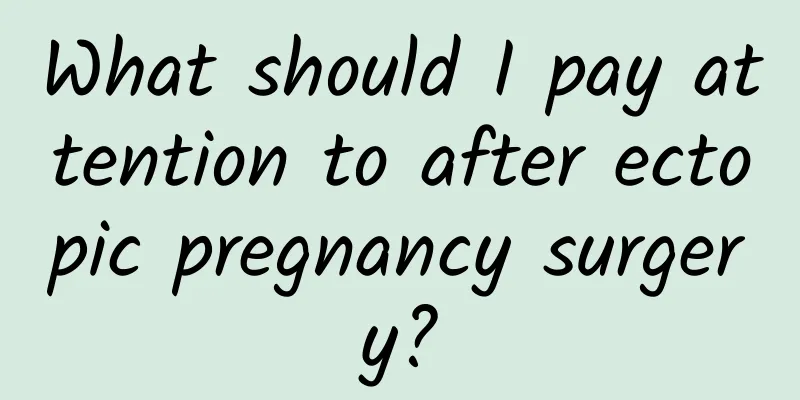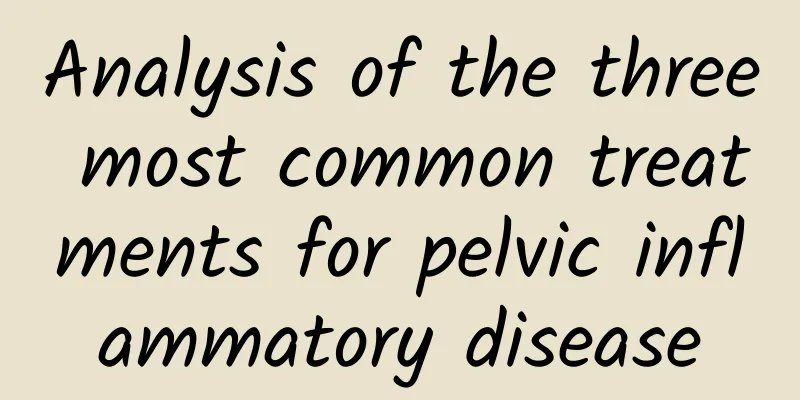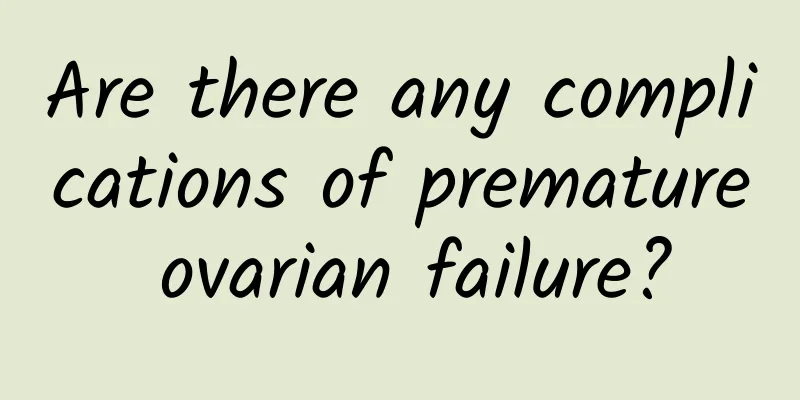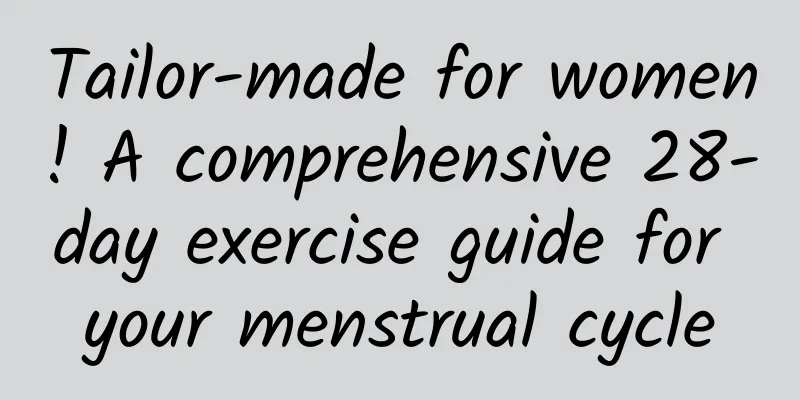What are the treatments for uterine fibroids? What are the dangers of uterine fibroids?
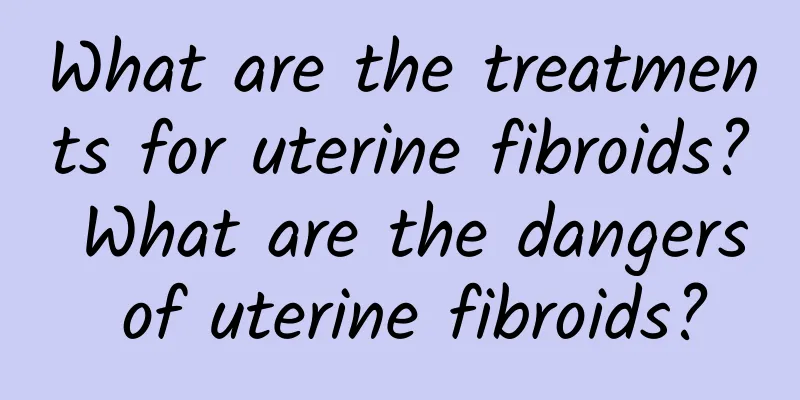
|
Uterine fibroids are a gynecological disease with a high incidence, but the incidence of pregnancy complicated by uterine fibroids is only 0.3% to 2.6%. Due to fetal problems, uterine fibroids during pregnancy have a great impact on the patient and the fetus. The size and location of fibroids have different effects on pregnancy, such as causing miscarriage or premature birth. Usually, if it is a single large or multiple submucosal or intramural fibroids, as the disease progresses, the enlarged fibroids will squeeze the uterus and cause the uterine cavity to deform, or cause the uterine cavity pressure to increase, triggering uterine contractions and causing miscarriage or premature birth. If the fibroids are located in the cervix or lower uterus or embedded in the pelvic cavity, it will affect the fetus' exposure to the pelvis or descent, causing obstructive dystocia. If not treated in time, it will endanger the life of the pregnant woman. Multiple uterine fibroids, especially poor uterine contraction, are an important cause of postpartum hemorrhage. Uterine infection and late uterine bleeding are caused by poor uterine recovery and poor lochia drainage. If uterine fibroids are found in the early and middle stages of pregnancy, attention must be paid to a series of complications caused by the growth of fibroids, especially red degeneration and various degenerative changes. Close monitoring and timely and effective treatment should be given, and the pregnancy should be terminated immediately if necessary to avoid endangering the life of the pregnant woman. Beware of the six dangers of uterine fibroids 1. Cause pain The pain is not obvious in the early stage, but as the fibroids grow, the patient may experience various compressive pains, which may manifest as lower limb edema or neuralgia, lower abdominal and back pain. 2. Abnormal leucorrhea Increased leucorrhea, such as increased leucorrhea caused by endometrial edema, bloody, smelly, and foul-smelling leucorrhea. Submucosal fibroids produce a large amount of bloody or smelly leucorrhea. 3. Secondary anemia Uterine fibroids can cause menstrual disorders. Long-term excessive menstruation can lead to secondary anemia and even anemic heart disease. In severe cases, symptoms may occur, such as general fatigue, pale complexion, shortness of breath, and palpitations. 4. Concurrent inflammation Bacterial bleeding and other causes lead to gynecological inflammation such as adnexitis and pelvic inflammatory disease. Complications of fibroids are mainly caused by tumor pedicle torsion or acute endometritis. Inflammation is sometimes purulent, and a few may form abscesses in the tissue. 5. Pedicle torsion Subserosal fibroids can twist at the pedicle, causing acute abdominal pain. If the tumor pedicle is severely twisted, a free fibroid may form due to the twisting of the tumor pedicle. 6. Cause malignant transformation Uterine fibroids are unlikely to worsen, but there is still a certain chance. Elderly patients, patients with large and fast-growing fibroids, especially those with fast-growing fibroids or postmenopausal fibroids, should be vigilant. What are the treatments for uterine fibroids? 1. Follow-up observation Patients with asymptomatic fibroids, especially those near menopause, can undergo follow-up examinations every 3 to 6 months. 2. Surgical treatment Surgical treatment is suitable for uterine fibroids greater than 10 weeks of pregnancy; menorrhagia, secondary anemia, ineffective drug treatment; bladder and rectal compression symptoms; cervical fibroids; rapid growth of fibroids, suspected malignant changes. Treatment can be performed by abdominal, vaginal or hysteroscopic and laparoscopic surgery, including myomectomy and hysterectomy. 3. Drug treatment It is mainly suitable for patients with fibroid pregnancy whose uterus is smaller than 2 months, whose symptoms are mild, whose menopause is near, and whose general condition is not suitable for surgery. The main treatment drugs include gonadotropin-releasing hormone analogs, mifepristone, etc. 4. Interventional treatment It is mainly suitable for patients with symptomatic uterine fibroids who do not need to preserve fertility but want to avoid surgery or have higher surgical risks. The indications should be strictly followed. |
<<: How to identify uterine fibroids? What should be checked before treatment of uterine fibroids?
>>: How to treat uterine fibroids? What is the best food to eat for uterine fibroids?
Recommend
How to deal with irregular menstruation? A complete guide to women's care, easily regulate your period!
Irregular menstruation is a problem faced by many...
What are the precautions before uterine fibroid surgery?
Precautions before uterine fibroids surgery. Suff...
Routine nursing care for cervical precancerous lesions
Cervical precancerous lesions are the most common...
Let's talk about the causes of adnexitis
Adnexitis is a comprehensive inflammation, which ...
What are the symptoms of bacterial vaginosis?
The most common disease in the vagina is vaginiti...
Diagnosis and treatment of congenital absence of vagina
Congenital absence of vagina quietly breaks into ...
What are the main types of cervicitis?
The types of cervicitis are mainly some diseases ...
Brief analysis of the dietary therapy for the treatment of chronic pelvic inflammatory disease
In clinical practice, chronic pelvic inflammatory...
How to correctly diagnose pelvic peritonitis
Among gynecological diseases, pelvic inflammatory...
The daily medications for patients with cervical precancerous lesions mainly include
What are the main daily medications for patients ...
Losing weight is super easy, start by changing the order of your meals! The explosive weight loss method has three major principles
When people who have tried to lose weight mention...
How to prevent ovarian cysts?
Ovarian cysts are more common in recent years. Ov...
Experts explain the harm of uterine fibroids to female friends
Uterine fibroids are a gynecological disease with...
Experts reveal: the dangers of severe cervicitis
It is understood that many female friends ignore ...
What are the dangers of female abortion? There are six major risks for girls to have abortion
Nowadays, the phenomenon of young people living t...
